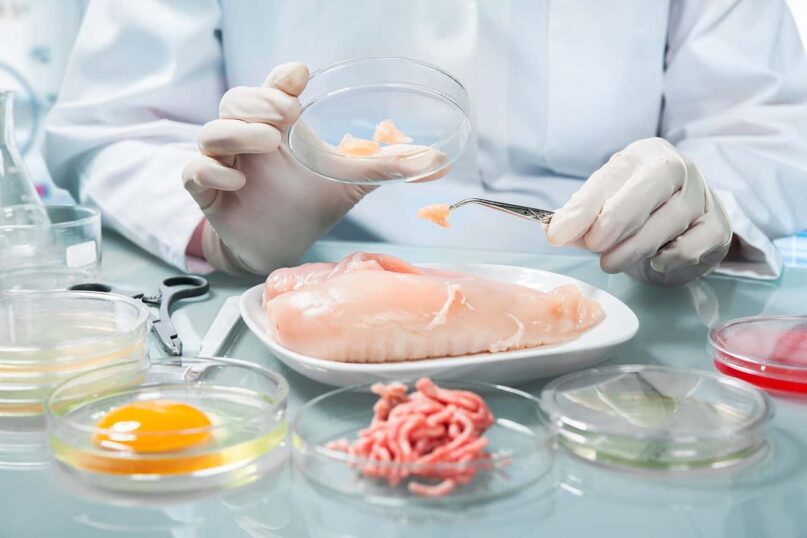
By Menachem Wecker
(JNS) The latest of more than 1.3 million products that the Orthodox Union certifies as kosher is lab-grown “chicken,” which is produced by the Israeli startup SuperMeat. It is the first lab-grown “meat” product that the nonprofit is certifying.
“The OU is pleased to provide certification to a product that meets kosher standards, while also leading innovation in food technology,” stated Rabbi Menachem Genack, CEO of OU Kosher, in a press release.
Lab-grown chicken is grown from fertilized chicken egg stem cells, and as such, doesn’t come from a live animal, which would be prohibited under Jewish law.
“The product is currently the product of a laboratory. Ultimately, in order to produce the product at an industrial volume, the company plans to perform a process in which the cells are propagated in industrial sized bioreactors,” Genack told JNS.
Given that the cells are taken during a “narrow zone of time” between when the egg is laid and blood spots—which would render the egg non-kosher—would appear, there is no concern about such spots, according to Genack.
The kashrut executive also told JNS that ritual slaughter, shechita, is not required for the lab-grown “chicken,” and although there might be issues of forbidden mixtures (kilayim) in other areas, “there is no such problem in this case.”
“Essentially, what happens is that the cells—initially a minimal amount—are introduced into an environment in which the cells divide. One becomes two, two become four and so on,” Genack said. “The environment that the original cells are delivered into is composed entirely of kosher (pareve) ingredients.”
The chicken will be considered meat, he said.
The environment is designed to provide energy to the cells and to stimulate their growth, and chemicals that mimic natural systems instruct the cells.
“Through this process of cell division, the original miniscule sample obtained from the newly-laid egg becomes more substantive,” Genack said. “Through additional technical processes, that substance can adopt a specific form and even assume the identity of specific types of cells, like a muscle cell.”
“In this way, one can produce something that resembles a chicken nugget, for example.”
PHOTO: Lab-grown chicken
CAP: Food inspection in a lab. Credit: Alexander Raths/Shutterstock.







 Southern New England Jewish Ledger
Southern New England Jewish Ledger












